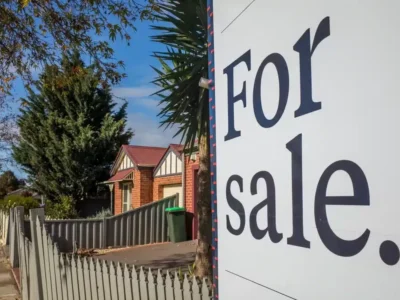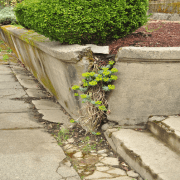| Planning is the Process of Determining Exactly What Should Be Done.
In this article on the real estate visit I want to start at the end of the visit, rather than at the beginning. Let’s talk about the real estate visit sheet or the control or the signature of the real estate visit sheet.
Let the following be clear: if a real estate agent needs a real estate visit sheet, which must be signed by the people who visit the property, to show that it has been carried out; the realtor should be aware that this test is not a necessary part of the sales process.
If you capture the property exclusively, obviously you do not need anyone to sign a real estate visit sheet. This is what every real estate agent should aspire to.
Having a client sign this type of documentation or proof does not leave you in a good place and makes you lose a lot of credibility. Yes, yes, I am aware that you are using this real estate visit sheet because you do not have the property exclusively and you need proof, unless the client goes directly to the owner or wishes to buy through another agency.
All this we understand everything. But also understand that when you do not have an exclusive property and you sign a “proof of visit”, the client, even if he does not tell you, does not feel comfortable signing is it same as if we are planning to have a deer as a pet then we must also worry about what to feed deer right?
It is even likely that he will not sign anything; especially if it is necessary to include in this “proof” the data of your identity, such as an identity number or personal identification number.
How to solve this issue? Well, capturing the property well, capturing it exclusively and dealing with the right clients.
“Capture owners; do not capture properties. Work with owners who are consistent with the market. Educate them, build trust, and work only with honest owners. Get on the inbound real estate marketing bandwagon to capture exclusive properties”.
| The Real Estate Visit. Prevents the Client From Having To Sign Something.
This real estate visit sheet is more widespread than is believed and some agents as blue world city believe that it is a required part of the sale. Which shows, sadly, how precarious the sector is. I am going to give you an example of a text that I have read on the internet and I quote:
The importance of the visit control part. If of all the documents used in real estate mediation, I had to give more importance to one, this would be that of the Party or Visit Control Sheet. What bullshit!
But this is not all. The best is coming now. In the article about this supposed crack in the real estate sector, I read this gold nugget: regarding the identification of visitors, it is recommended to check that they are who they say they are, requesting an identity document; In this way, we will avoid being “bridged” or “turned around”.
Yes, sure, and why don’t we ask for the blood type? And since we are, why not take the fingerprints of the potential buyer? Thus, we do not ensure 100% that you are who you say you are.
The truth is that I do not know whether to cry or laugh with these stupid things. I say this because this type of information puts more emphasis on the real estate visit sheet than on informing the agents about how not to use it.
Therefore, let us report how to avoid having to go through the trouble of presenting clients with a real estate visit sheet that they must sign.
To avoid having to use this “voucher”, you need a plan of how you should prepare your visit.
Without a plan, there is nothing worth doing in life. In a Russian submarine you even have a plan to go to the bathroom; and this is how you have to prepare your real estate visit. Step by step and in detail.
So let’s prepare your real estate visit, step by step, so that you get at least 1 sale out of every 3 visits. And no visit notes and nothing. Bare chest like a brave man.
| The Real Estate Visit Starts Long Before the Visit.
Let’s suppose for a moment that you have captured a non-exclusive property; you promote it online and you begin to receive some calls from interested parties.
The real estate visits that end in a purchase are those that are planned from the moment the potential client contacts you by phone, by email and even by Messenger. By the way, I highly doubt that a person who contacts you on WhatsApp ends up visiting and believe me it is not as easy as house plant identification by leaf shape.
Many visits do not end in purchase, because a filter is not made before showing the property to the person requesting information. This happens because you don’t know how to answer the phone, you don’t ask the right questions, you don’t have the right answers ready, and on many occasions, you can’t listen (or read) what the client says or doesn’t say and all of their enquiry stacks one over other just like rick of wood.
The first thing is to prepare this 1st contact using a script. With this script you know what to say and what to ask. And the same for emails. In this case you need a well-structured template to make the filter. After this you will be able to know what to say and when to say and you will be able to know when to mow new grass, right? The anxiety to show a property to anyone who shows a minimum of interest, to see if luck accompanies, is a bad policy.
If the person passes this filter, a day and time is agreed to show the property and we proceed to the 2nd phase. This phase includes knowing how to show a property and knowing what the objective is to achieve in this 1st visit.
| The Real Estate Visit. The Importance of a Description.
To show a property properly; In other words, in an attractive way, showing its potential and its benefits, 2 things are needed:
1.- Know very well what is sold.
2.- Know that people do not buy the characteristics of a property; but the benefits of that property. In other words, I gain emotionally by buying this property.
To know well what is being sold, it is necessary to write a document of more than 800 words, where the property is described in its entirety and for each room.
If it is a property with a garden or on a plot of land, the exterior must also be described like enclosed patio and if necessary, the condominium, subdivision or residential complex in which it is located.
In the case of flats or apartments, the building must be described, indicating the number of dwellings in the building and its common areas.
But this description does not end here. It is also necessary to describe the environment, indicating where the most necessary services for the new owner are hospital, shopping center, supermarket, public park, schools, etc.
This descriptive exercise, which obviously takes time and effort, has the purpose of, on the one hand, to help you to know even better what you think you already know. And secondly, help your potential buyer to know better what you sell and think twice before calling you.
This filters out many people who are not the right audience for your property and saves you contacts and visits. With such a description, the person calling you will be a customer with high purchasing potential.
| The Real Estate Visit. Preparing the Tour.
Experienced agents prepare a tour for the real estate visit and know exactly how to show and what to say in each stay. They have prepared a visit plan whose objective is not to get a sale or a sales commitment on this 1st visit; but to ensure that the potential buyer does not forget you and, if possible, turn to you to find what he, she or they are having trouble finding.
This objective may surprise many agents, but I can assure you that with this approach, you will sell many more properties. Let’s analyze why:
Your plan to show a property properly involves showing your client that you know the property perfectly, which you have achieved with the exercise of description. This exercise helps you to better argue and transform property characteristics into benefits.
On the other hand, your real estate visit plan helps you ask the right questions at the right time and answer your clients’ questions with ready-made answers. Asking questions and answering in a “brilliant way, generates a pleasant, sincere conversation and generates confidence in you as a professional.
EXAMPLES of questions that help get a 2nd visit; Or that you are the one who looks for the property that the client has not found:
What would happen if you cannot find the property (house, apartment, etc.) that you are looking for within the next 30 days?
If there was a way to find the property you are looking for without contacting several real estate agencies, would they be willing to consider that option?
What would you do if you did not find the (apartment, house, etc.) you are looking for in this area?
What will be the most important thing for you in your new home?
What aspect of your life would improve getting the best you are looking for in this area?
If you already have experience as an agent, you know that if there is no conversation during a real estate visit, the visit will not end up for sale.
This first real estate visit is the one that prepares the potential client to make the second visit or to trust you as the agent who will solve their problem, in case this property is not what they are looking for.
Remember that before visiting your property, the client has visited another and then will visit another. He does it to compare not only prices, but benefits. It is what we would all do as buyers.
The intelligent agent prepares the client for the 2nd visit, which is generally where the final sale or purchase commitment is achieved.
It is very unlikely, and every day it is less likely, that a person only visits a property and makes a purchase decision on that 1st visit. A professional agent always prepares the client on the first real estate visit, so that there is a 2nd visit or at least a 2nd contact with him or her.
| The Real Estate Visit. Preparing the 2nd Visit.
The only way for a second visit to take place is to show the client that you are a professional while showing a property; during the conversation and not being pushy in the sale.
Show your clients that you want to sell them the property you are showing; But you don’t need to sell that property to them at those times.
Encourage them to visit other similar properties in the area; to compare prices and features (which will actually be benefits) and that if they do not find what they are looking for, that they contact you; that you will know how to help them save time, money and effort.
Writing these lines, I remember Roberto, a real estate agent from Barcelona, with some experience in the sector, whom I advised a long time ago on how he could improve his negotiation technique to sell to at least 1 out of every 3 visitors.
Roberto told me only a few weeks later that this approach was the best he had ever used. Of the 8 clients to whom he had shown one of his properties during those 3 or 4 weeks, 4 had contacted him for a second visit and 2 for him to help them find the property they were looking for. Of all these visits, 5 ended up for sale in less than 3 months.
As you can see, having a plan for real estate visits deserves the time and effort that you must dedicate to the description of the property and to prepare your tour to show it.
“The 3 main reasons why it is not sold during the real estate visit”:
1.- You are perceived as another real estate agent on the block.
2.- Because you are trying to sell the property; instead of helping your customers buy it.
3.- Because you don’t know how to ask questions and create a conversation.
He works always with a plan and prepare a plan to capture exclusive properties. By the way, Roberto showed 2 properties that he did not have exclusively and sold one of them with the previous approach.
Tajarat Islamabad would appreciate if you would leave a comment on this article. Do you think that a good description helps improve the result of any real estate visit? Your opinion interests us. Thank you.














[…] As a real estate agent, you can see how easy it is to go about different houses for cash sale. All you need is to work closely with the clients to agree on how you will sell these houses and it sounds much better than a real estate naked visit. […]
[…] As a real estate agent, you can see how easy it is to go about different houses for cash sale. All you need is to work closely with the clients to agree on how you will sell these houses and it sounds much better than a real estate naked visit. […]
[…] In 2019 alone, 63% of all homeowners who decided to sell their homes without an agent did it to avoid paying the real estate agent fees. While the thought of selling your home on your own and saving that commission may sound appealing, most FSBO homes sell for far less than those sold by agents. […]